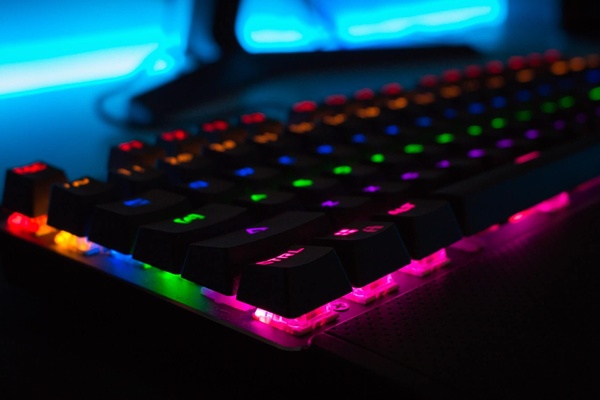A laser 60 mechanical keyboard is the latest in projection technology that wirelessly displays a virtual keyboard outline onto a flat surface, allowing you to type almost anywhere with no cords or bulky equipment. The projector is usually a small device the size of a small phone, which sits a few inches from where you want the laser keyboard to display. The surface that it is projected on has to be non-reflective to avoid inconveniencing the user.
Unlike in the normal keyboards used at home where switches close with every keystroke and translate into a command, the laser keyboards use infrared technology. The device has a small red diode laser that projects a full QWERTY keyboard on a flat surface. The surface should be flat in order to make typing much more easier.
The conventional keyboard is also known as a QWERTY 60 mechanical keyboard because the first letters on the key board are Q, W, E, R, T and Y. The design was adopted from typewriters that have been in use since the late 19th century.
There is usually a diffraction within an optical element placed on the diode that the light shines through. The diffraction through the optical element is a tiny image of a full QWERTY keyboard that is magnified and projected once the light goes on. For magnification to a user friendly size 60 mechanical keyboard, special optical lenses are used.
However, this is just a displayed keyboard that cannot help type because it has no means of communicating with the device. To enhance this, an infrared laser diode is placed at the near bottom of the device. The laser diode also projects a thin plane of red light on top of the projection keyboard. They do not overlie each other but are rather millimeters apart.
When a keystroke is made, there is an interruption in the infrared light noted in the device. The key is determined either by use of sensors or a camera. Devices that use sensors have sensor chips installed inside them which determine where an interruption in the light occurred and then decode which key was struck.
The devices that use cameras work a little differently but achieve the same task. A camera is strategically placed on the device so that when you strike a key the camera calculates the angle and coordinates from which the interruption in the infrared light occurred. From the information collected the camera has a logic unit that then translates the information into a keystroke recognizable by the user. This is the reason why they must be used on flat surfaces to get rid of the camera making wrong calculations.
In order to display the typed data on the screen, a means of connection between the projector and the screen must be established. A universal serial bus (USB) cable may be used to connect and transfer the data between the devices. The demand for wireless technology and hence less accessories has led to the use of a Bluetooth laser keyboard.
The keyboard uses Bluetooth connectivity to connect to the display screen. The technology is more efficient and less prone to disconnections. A USB cable is more prone to damage and can disconnect when touched at times unlike Bluetooth which has a connectivity range of 10 meters. Bluetooth devices are compatible with almost all devices including tablets, smart phones and monitors. USB cables are not conventional because each manufacturer has different versions and you would therefore need a lot of the cables for compatibility with different devices.
Laser keyboards have many advantages. One of them is portability because it is now easier to carry around a computer. The conventional keyboard is much heavier than the projection keyboard. Secondly, there are people who have large fingers and usually find it difficult to type on phones and tablets because of the small sized screens and keypads. Typing has now been made easier for them from anywhere because they just need to use the laser keyboard which projects the keyboard into a conventional size.

